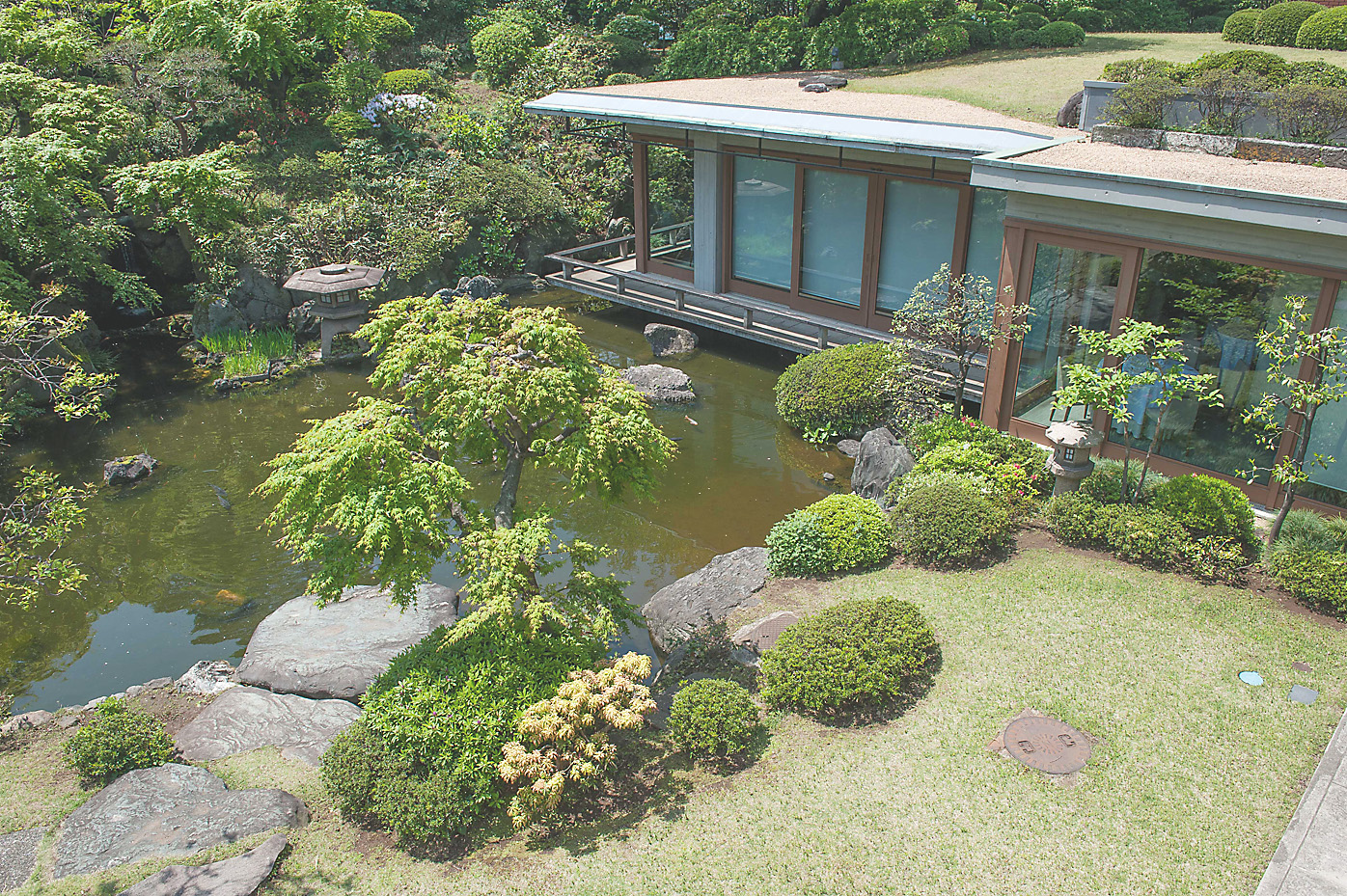There is a visible nod to tradition in the shaping and use of natural materials to finish off the exterior of International House, a Modernist building in one of the nicer residential areas of Tokyo's swank Roppongi district.
A large part of the original section of this institution traditionally dedicated to nurturing international exchange, but now embracing a rather broader agenda of cultural and commercial events, is clad with oya-ishi (Oya stone). The rock, a kind of tuft formed from volcanic ash, has a grain and quality boasting the kind of porous texture marked with holes that's found in certain European cheeses. Its tonal range — from powdered green tea to muted blues, and even mustard — hint at the idea of nature transformed by human hands. The concept is even more evident at the rear of the building, the location for a modest but aesthetically pleasing garden.
With the exception of dry-landscape installations, whose lines and components are determined by stone settings that can retain the same sight lines for centuries, Japanese gardens have undergone changes in form and dimension as the result of climatic conditions, urban development, fluctuating design trends and, above all, ownership.


















With your current subscription plan you can comment on stories. However, before writing your first comment, please create a display name in the Profile section of your subscriber account page.